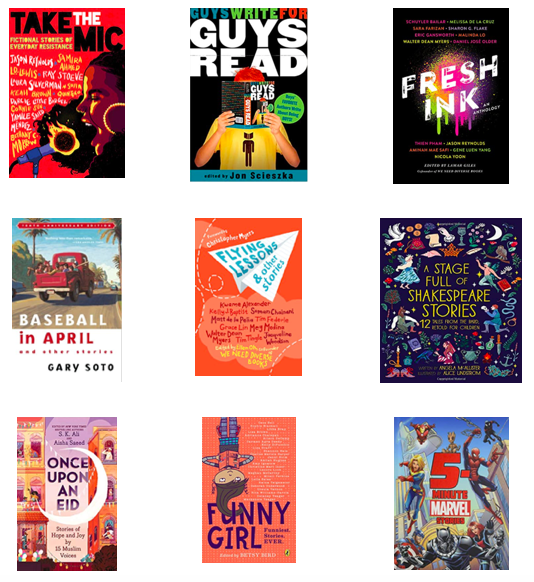I’m so fortunate to hang out with wicked smart administrators, coaches, and teachers across states and learning environments. I am so much smarter and better positioned to support others because of their knowledge and experiences.
In this guest blog post, I’d like you to meet Kristy — a teacher, coach, colleague and friend extraordinaire! Every time I’m at her school, I learn so much from her. Check out this simple and sweet capacity building move she harnesses called “Learning in the Loo”.
What is “Learning in the Loo?”
Authored by Dr. Kristy Rykard
“Learning in the Loo” is not my own original concept. It’s been around for a while, and a quick Google search will show you plenty of examples. It has a variety of creative names, such as “Potty PD” and “Tissue Issues.” Basically, it’s a 1-2 page newsletter with some quick tips and ideas to share with your “captive audience” by posting it in a conspicuous place in the restroom. Everyone visits the potty daily, so “Learning in the Loo” is a poofect way to do some light coaching asynchronously. I use Canva to create my Loos, and I leave sheet protectors on the walls of the restrooms so I can easily swap in the new issues (or tissues, if you please). I publish a new Loo on the first school day of each month, and I also include a link in my email signature so that faculty and staff can pull it up on their computer if they want to explore more about a specific tip.
Here are some examples of my past Loos.
Why I Publish “Learning in the Loo”
The year before I became the Digital Learning Coach (DLC) at my school, my predecessor had started “Learning in the Loo” in all the faculty and staff restrooms around the school. As a teacher, I always loved it so much. First of all, who doesn’t love some handy, interesting reading material in the potty? The “Toots and Giggles” section was the first thing I always checked out when a new one was published. Soon, however, I realized that I was really getting something out of the Loo each month. I remember drying my hands and seeing tips or new tools and immediately thinking, “Oh, that’s so neat. I could totally try that when I get back to my room” or “Omigosh! That might work for the lesson I’m doing next week!” My colleagues and I collaborated on trying out ideas we had seen in the Loo with our students. We had no idea we were being “ninja coached,” but it was working. So when I moved into the DLC role, I knew I had to continue that work.
What to Include in the Loo?
I’m smart and just FULL of ideas, but it’s a pretty big lift for a busy coach to get a four-section newsletter published every month without some help. I subscribe to a plethora of digital learning newsletters, blogs, Twitter accounts, etc. I’m surrounded by tons of amazing ideas, tips, and tools, and the Loo is a natural outlet to share them with my teachers. Each month, I curate the tips, ideas, and digital tools I think will most benefit my teachers and their students, add them to the Loo, and credit the original sources. Everyone takes their phones to the potty with them these days, so I always include QR codes for more information, videos, and/or the original source.
A Few of My Favorite Resources for Digital Tips, Ideas, and Tools
Shake Up Learning by Kasey Bell
G Suite Tips by the team at Overdrive
Richard Byrne @rmbyrne on Twitter
Shelly Sanchez @ShellTerrell on Twitter
I also use the Loo as a place to share effective learning activities facilitated by teachers in our school, so I often include pictures and anecdotes from my classroom visits. With teacher permission, I link to their lesson plan or materials. It’s a great way to lift the assets of the brilliant educators in our own building and encourage collaboration among our faculty.
The Results
My teachers absolutely love “Learning in the Loo.” They come looking for me if I am even one day late putting the monthly Loo out, and when they see me coming down the hall with my stack of Loos to deliver, their eyes light up with excitement to see what’s in the new edition. I know it sounds crazy that anyone would look forward to something so simple, but it’s true. I’ve had teachers book coaching time with me, email me to ask for more information, or share how they incorporated an idea from the Loo in their classes. Some people take the tip and run with it, and others want to expand and collaborate on it. It’s been a fantastic way for me to open doors as a coach and get conversations started. And it’s the best feeling when I’m in a classroom, and I see something from the Loo coming to life with students. That’s why we’re all here in the first place, right?
Dr. Kristy Rykard has been in education for over 22 years. She began as a high school English teacher, and she now serves as a Digital Learning Coach in Lexington School District One in Lexington, SC. In her personal life, Kristy is an avid world traveler, reader, wife, cat mom, Netflix binger, and online shopper.
@DrRykardDLC
krykard@lexington1.net




